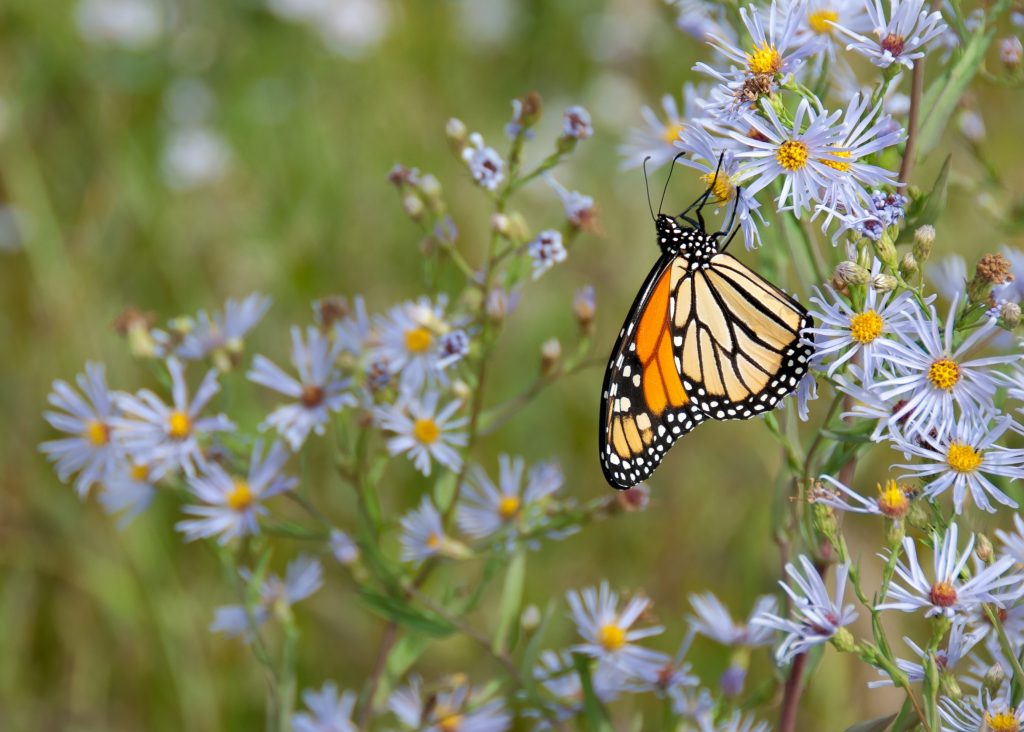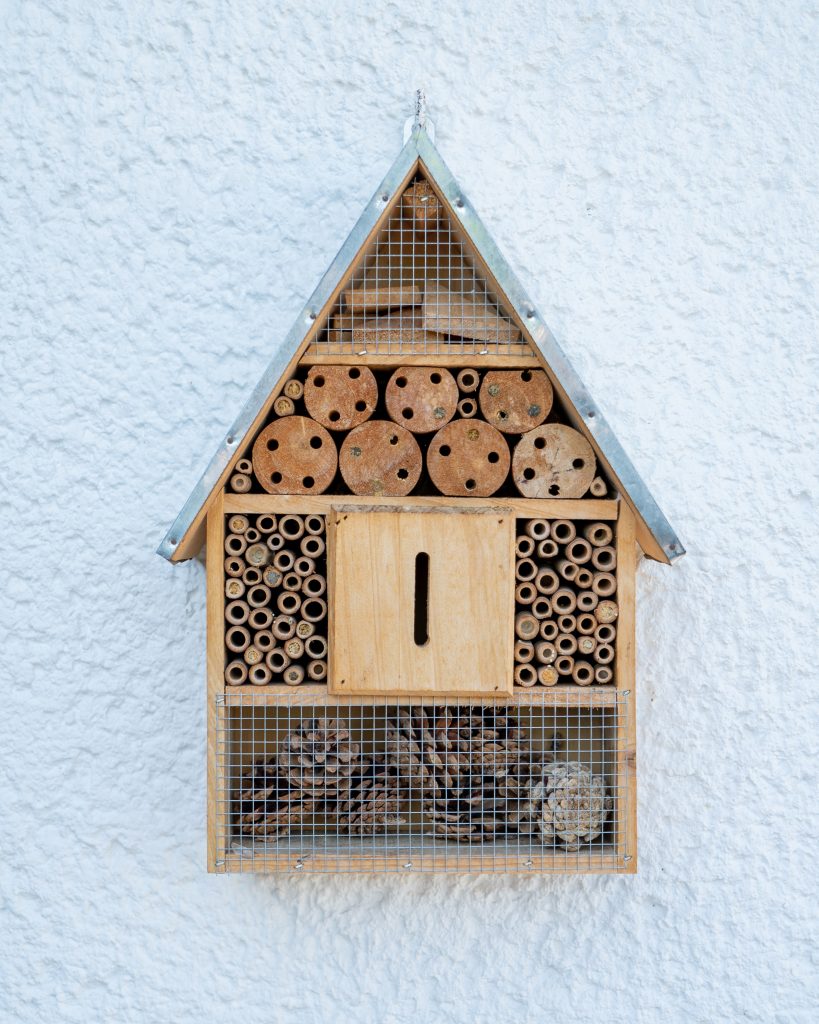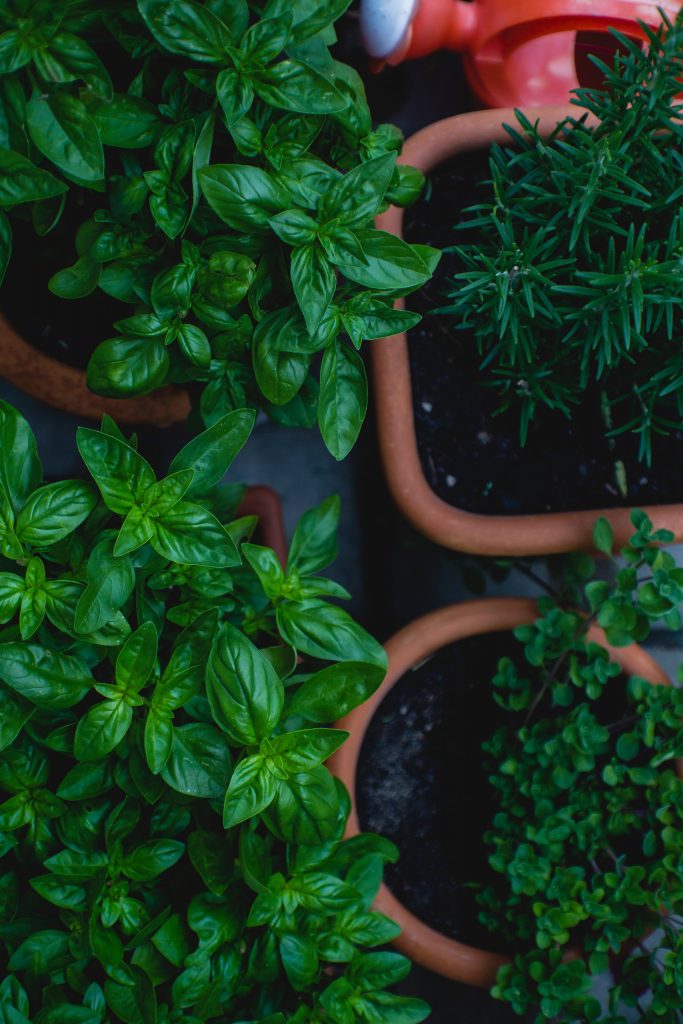Top 5 Tips to Support Local Pollinators in Your Garden
Apr 26, 2021
It’s no secret that people rely on pollinators for food production, but just how threatened are pollinating species? Birds, bats, bees, butterflies, ants and moths are just a few examples of the pollinators in New Brunswick and across Canada, but issues such as habitat loss, monocrops, pesticide use, and climate change have caused severe challenges for diverse types of pollinators. With approximately 75% of plants requiring pollinators in order to reproduce, it is crucial that we consider ways of supporting pollinating species within our communities and homes. So if you are planning a garden this year, check out our top 5 tips to support pollinators in your backyard:
1) Plant diverse flora that blooms throughout different seasons
Planting a variety of blooming plants will support a variety of pollinators, who often have specialized pollination skills. Flowers of different colours and shapes will attract specific types of insects and animals, and growing plants that bloom on a rolling basis will ensure a consistent food supply throughout the year. Wildflowers such as lupin, yarrow and daisies play a particularly key role in supporting pollinators, as well as clover which is a favourite of native bee species.

A monarch butterfly settles on an Aster flower
2) Include a bird bath, bat box, or bee hotel
In addition to attracting beautiful wildlife to your backyard, bird baths serve as an important water source to resident and migratory bird species. But setting up a bird bath is not as simple as filling a tray of water. The best bird baths are no more than 2” deep, located in the shade, near foliage/cover, and kept free of algae growth. To maximize the effectiveness of your bird bath, ensure that it serves as a cool, clean, and quick pit stop that can be accessed easily and safely.
Bat boxes can also help support local pollinators by providing cozy accommodations and nesting sites to bats, who have suffered large expanses of habitat loss. Don’t worry, New Brunswick bats are uninterested in humans and are generally harmless (though it is not recommended that people handle them). In addition to being key pollinators, bats are extremely efficient pest control agents, eating mosquitoes, flies, beetles, and other forest pests. Installing a bat box in your backyard is a great way to keep backyard pests at bay while also taking environmental action.
Another great backyard eco-action is installing a bee hotel. What is a bee hotel? And why would we want to encourage bees to nest in our yards? Two fair questions!
Bees are vegetarian, and generally uninterested in you or your backyard picnic. So no need to fear these tiny pollinators – wasps give them a bad reputation! Placing a bee hotel in your backyard is a great way to accommodate nesting bees, but it’s important to be mindful of a few important strategies that will help you to attract the right kind of neighbours.
- Most native bee varieties actually nest in the ground, so don’t hang your bee hotel too high. It takes a lot of work for a bee to fly to higher locations, so placing your bee hotel a few stories above can deter bees from settling in.
- Place your bee hotel in the southwest sun, bees like to warm up before their early morning pollen harvest.
- Keep an eye on your bee hotel throughout the spring and summer, and clean out your bee tubes each winter. Placing your bee hotel in an emergence box in late winter or early spring will ensure that after new bees hatch, they will exit the bee hotel, and will be unable to return. Place a second bee hotel close by to encourage your bees to nest in a new space, allowing you to thoroughly clean your previous bee hotel. This will help prevent pathogens and intruders from invading the hive.
- Be inclusive! Bees come in different sizes, so ensure your tunnels have different diameters. Diversity is key!

Bee Hotels come in all shapes and sizes. They can be built out of simple materials at home, or can be purchased for a more stylish aesthetic.
3) Remember, a clean and tidy garden isn’t necessarily a healthy garden
Leave plant debris to decompose in your garden over the winter, adding rich nutrients to return to the soil. This will also create important habitat for insects, and can serve as nesting sites in the spring. Fallen logs, soil patches, and dead trees can all help insects such as bees thrive year-round. If keeping a picturesque garden is something that you aren’t willing to sacrifice, consider leaving just a section of your garden for nature to reclaim.
4) Avoid using pesticides/herbicides – even natural ones!
Pesticides and herbicides are indiscriminate killers, even products that claim to be made of natural ingredients. This can be detrimental not only to undesirable flora and fauna, but also to beneficial insects and pollinators. Instead, look into preventative ways to keep pests and weeds out of your garden bed. Consider integrating native plants that naturally deter pests such as mint or lemon balm. Or, incorporate plants such as yarrow or black-eyed susans, which attract natural pest controllers (such as ladybugs). Planting a diverse assortment of flowers and plants will also help prevent pests from taking over, as pests tend to thrive in monocrops. And if you do find that weeds are invading your garden, don’t be afraid to roll up your sleeves and tackle the problem the old-fashioned way!
5) Plant herbs in pots and let them flower
Planting herbs can be beneficial for both local pollinators, and your kitchen! When allowed to flower, fresh herbs such as thyme, rosemary, basil, sage can provide a buffet of food and nutrients for native pollinators. Using pots to plant herbs can keep them from overtaking your garden while still keeping them accessible to beneficial insects.

Herbs can be grown easily in backyard pots or on a windowsill during the summer months
Whether you have a large backyard or just a porch, there are numerous ways to support your local pollinators throughout the year. We rely on pollinators for food security, and with so many threats, pollinators need all the help they can get. So when you are planning your garden this year show a little appreciation to pollinators, and remember that even one small action can have a huge impact.
Reference List:
1. “Pollinator Gardens.” City of Guelph, City of Guelph, 17 Mar. 2020, guelph.ca/living/house-and-home/lawn-and-garden/sample-garden-designs/creating-a-pollinator-garden/.
2. “Pollinator Garden Project.” Pollinator Garden Project – Fundy National Park, Government of Canada, Parks Canada Agency, 24 Apr. 2020, www.pc.gc.ca/en/pn-np/nb/fundy/nature/conservation/pollinisateur-pollinator.
3. Hempstead, Andrew. Atlantic Canada’s Wildflowers and Other Plants . www.moon.com/travel/outdoors/atlantic-canadas-wildflowers-plants/
4. “20 Simple Gardening Tips To Help Bees.” BuzzAboutBees.net, www.buzzaboutbees.net/Simple-Gardening-Tips-To-Help-Bees.html.
5. “Pollinators Are Important!” Let’s Talk Science, 9 June 2020, letstalkscience.ca/educational-resources/stem-in-context/pollinators-are-important.
6. Chung, Emily. “Climate Change Is Killing off Bumblebees: Study .” CBCnews, CBC/Radio Canada, 6 Feb. 2020, https://www.cbc.ca/news/science/climate-change-is-killing-off-bumblebees-study-1.3145014?x-eu-country=false#:~:text=810-,Bumblebees%20can’t%20move%20north%20to%20cope%20with
%20warmer%20temperatures,Europe%20from%201901%20to%202010.
7. “Spring Is in the Air! Help Mom Plant a Pollinator Garden This Mother’s Day.” Conservation Council of New Brunswick, www.conservationcouncil.ca/spring-is-in-the-air-help-mom-plant-a-pollinator-garden-this-mothers-day/#:~:text=There%20are%20eight%20major%20groups,of%20year%20they%20bloom%2C%20etc.
8. “The Benefits of Bird Baths: The Home & Garden Center.” The Home & Garden Center | Where Ideas Blossom, thgc.net/the-benefits-of-bird-baths/.
9. Hutchins, Aaron. “Are Bee Hotels the Answer to Saving a Species?” Macleans.ca, 25 May 2015, www.macleans.ca/society/science/are-bee-hotels-the-answer-in-saving-a-species/#:~:text=%E2%80%9CNative%20wasps%20were%20significantly%20more
,relative%20abundance%20year%20over%20year.%E2%80%9D.
10. “Natural Garden Pest Control.” Eartheasy Guides & Articles, learn.eartheasy.com/guides/natural-garden-pest-control/. https://learn.eartheasy.com/guides/natural-garden-pest-control/
Author: Katelyn Plant, Communications Manager, The Gaia Project
Follow us on social for more stories, news and updates:
Facebook: www.facebook.com/gaiaproject
Instagram: @thegaiaproject_
Twitter: @gaiaproject
LinkedIn: @TheGaiaProject